6 Directions UFO: 2 Could Have Taken

The histories of each of Gerry and Sylvia Anderson's individual TV and film productions throughout the 1960s and 1970s are closely intertwined, but perhaps none more so than UFO (1970-71) and Space: 1999 (1975-77). Both share similar tonal identities as mature, intelligent, and live-action approaches to the style of puppet science fiction adventure perfected by the Andersons during the 1960s, but their developments are tightly interwoven too. Space: 1999 was born out of a salvaged attempt to create a second series of UFO, in response to its initial strong performance on American television.
The proposed UFO: 2, also known as UFO: 1999 during its pre-production development, would have focused almost exclusively on the moon, expanding SHADO's lunar defences against the ever-present alien invaders. A severe buckling in the ratings during UFO's primetime evening slot caused the proposed series to be scrapped, but the Andersons reformatted their extensive conceptual work to become an entirely new series - Space: 1999.
Space: 1999 takes place in an entirely separate timeline to UFO, leaving the lost future of UFO: 2 as something to greatly speculate over. How might have UFO: 2 been realised? What directions might the series have taken? How separate could it have been to UFO and the eventual Space: 1999? Let's investigate!
6. Extensive hardware

It's usually a tricky prospect to speculate on television series that were never produced, but in all technicality, UFO: 2 did get made - it just happened to be made with a new name, separate characters, and entirely different premise! Much of the pre-production work for UFO: 2 had consisted of concept art drawn up by art director Bob Bell and his assistant, Keith Wilson. Wilson himself would eventually come to serve as Space: 1999's own art director, and the various concept pieces that have survived clearly show why, demonstrating Wilson's accomplished artistic talents and imaginative flair for the futuristic.
Moon City, as it had been named, would have vastly expanded upon the original SHADO Moonbase, now becoming a vast defensive metropolis who's visual flavour evidently took inspiration from 2001: A Space Odyssey. A major visual distinction between Moon City and what would become Moonbase Alpha is where Alpha is constructed in a snake-like fashion with structures jutting out and around, Moon City would have boasted soaring tower blocs.
Much of what appears in Wilson's art would eventually be produced quite faithfully for Space: 1999, including the Moonbase Alpha corridors with communications columns, Travel Tube, the Main Mission centre and its accompanying observation port. If nothing else, we can safely guess how UFO: 2 would have at least looked.
5. Improved vehicles

An abundance of pre-production series proposals were written up by the Andersons when pitching the series that would become Space: 1999. Although a defining detail throughout all these documents is how the Moon becomes thrown out of the Earth's orbit, other defining details include the backstory of how the Moon has become a strategic defence post in humanity's war against alien invaders. We may safely assume that these are the details that were salvaged from the uncommission UFO: 2, and included in them are breakdowns of what vehicles would have been stationed at Moon City.
Such vehicles as lunarmobiles, reconnaissance rockets, interplanetary transport, moonbuggies, interceptors, and hoverhoppers are described in these documents. These suggest that Moon City would have boasted numerous different types of vehicles for traversing the harsh lunar landscape, travelling around the city, and rockets for travel between the Moon and, presumably, Earth.
UFO's Moonbase operations had already included many vehicles that are described here. We can surmise that interceptors and moonhoppers would have been close to their UFO counterparts, while moonbuggies would greatly feature throughout the eventual Space: 1999. Any equivalent of Space: 1999's most beloved vehicle, the Eagle, isn't immediately apparent here and would initially emerge as the Multi Transport Unit, or MTU.
4. New or returning cast?

Although Wilson and Bell's concept art are the strongest indicators of how UFO: 2 would have developed, the Andersons also hired Christopher Penfold, fresh from WW2 drama The Pathfinders, to serve as the proposed series' script editor, who in turn hired Irish writer Johnny Byrne to assist. Penfold was tasked with developing UFO: 2 so that it was recognisably linked with the first series yet still managed to develop that first series sufficiently with its renewed lunar setting.
Precisely what Penfold and Byrne's contributions were during this embryonic stage have become lost to time, so we can't be certain how UFO: 2 would have called back further to UFO. One hot topic that would have determined the strength between the two series is whether or not UFO: 2 would have employed a returning cast or embraced a new set of heroes. The time jump from 1980 to 1999 indicates that a newer cast of fresh faces would likely have been employed, but perhaps allowing room for irregular appearances from some familiar faces?
Impossible as it may be to envision UFO without Ed Bishop's arresting performance as Ed Straker, Moon City had been envisioned as a city with a large population, foreshadowing the ensemble cast of Space: 1999. If a newer cast was utilised, could there have been room for such characters as Ed Straker or Colonel Foster to make cameos as returning senior staff? The world of UFO was on the cusp of enlarging for further room, but alas, we'll never know!
3. Surreal alien attacks?

Outside of any new or returning heroes, how UFO: 2 would have advanced its predecessor gives pause for thought as to how UFO: 2 would have portrayed the elusive, unnamed aliens.
UFO experienced a five-month break in its production, prompting its final batch of eight episodes to prioritise increasingly surreal premises. The aliens embark on far more outlandish campaigns of terror against SHADO, with episodes featuring time travel, drug use, and hypnotic animals! Could this enhancement have fed into UFO: 2's own storytelling?
Where the aliens often invaded the Earth in a solitary, piecemeal fashion throughout UFO, often with just one flying saucer at a time succeeding in penetrating past SHADO's defences, what little we know of UFO: 2 may have enlarged the aliens' presence. It's highly likely that the aliens would have mounted more ambitious and full-scale assaults against SHADO, surely justifying the outfit's expansion of its lunar operations. But would the likes of Timelash or Mindbender have set a new standard for bizarre scenarios in which the aliens mount mental as well as physical attacks?
2. Lack of character development?

Some of the best episodes of Space: 1999 from Penfold and Byrne have far more to do with compelling characterisations than outlandish sci-fi action. Voyager's Return (Byrne), Dragon's Domain (Penfold), and Another Time, Another Place (Byrne) are sublime examples of how Space: 1999 was mindful to allow room for soulful dynamics of personalities within the series' heady cosmic philosophising and effects-driven adventure. However, could UFO: 2 have dispensed with such ideas entirely?
UFO boasted its own share of emotionally-driven episodes, mostly focusing on Straker's volatile balancing of his personal and professional life. Such episodes as A Question of Priorities, Confetti Check A-O.K. and The Responsibility Seat may be celebrated by fans, but A Question of Priorities in particular drew the wrath of ITC New York's Abe Mandell, a crucial executive personality in Space: 1999's eventual success. Tellingly, these emotionally-charged episodes mostly took place on Earth, rather than the moon.
Mandell took great exception to that episode's depiction of the devastating loss of Straker's son at the expense of comparatively surface-level sci-fi action. If UFO: 2 was to have been given the greenlight, would it have been a precautionary measure of the Andersons to scrub clean any emphasis on engrossing character work? And would that have been a waste of Penfold and Byrne's talents? UFO's strong focus on the political bureaucracies suffered by Straker in running SHADO may well have been abandoned for UFO: 2, and the lunar setting itself may have served as the perfect excuse to untangle the series from character conflict and focus on far more action-driven scenarios.
1. A Vulnerable Commander

It's well-documented that much of Space: 1999's early success hinged on the acquisition of star American talent to boost the series' profile. The solution was to cast husband and wife acting duo, Martin Landau and Barbara Bain as Commander John Koenig and Doctor Helena Russell, respectively. Coming off of the militant attitude of Commander Ed Straker, Koenig's relative humanism imbues Space: 1999 with an approachable warmth which UFO rather purposefully lacked.
However, it's safe to say that the two commanders aren't cut from the same cloth in the writing department. We come to know so much of Straker's tragic backstory over the course of UFO, and in turn, how these tragedies informed his leadership style and overall personality. Koenig, by comparison, isn't given that same level of detail for audiences to savour. Despite our earlier speculation on UFO: 2's possible lack of tangible characterisation, there's room to speculate that the series could have matched UFO's appeal by featuring a vulnerable leader figure.
If UFO: 2 was to prioritise a new cast, a new commander comes with the possibility of having to live in Straker's shadow, to be a leader worthy of standing shoulder to shoulder with SHADO's emotionally scared yet unbreakable leader. That's surely a compelling trait for audiences to latch onto. It's no secret that Sylvia Anderson wasn't entirely content with the eventual casting of Landau for Space: 1999. She instead wanted a protagonist who couldn't be relied upon to have all the answers all at once, and wanted an actor who could communicate these characteristics.
The demand for a recognisable, unflappable star to cement Space: 1999 going into production overruled this idea, but it remains intriguing to think if this was an idea Sylvia had clung onto during the brief pre-production of UFO: 2. Space: 1999 would ultimately bring many of UFO: 2's creative elements to life, but the reinvention of UFO remains one of the great 'what-ifs' of Gerry and Sylvia Anderson's career.

Nearly 50 years since Moonbase Alpha was blasted out of orbit, it's intriguing to consider the alternate futures that the series may have experienced if UFO: 2 had been fully realised.
You can take Space: 1999 in your own chosen direction with the Space: 1999 Tabletop Roleplaying Game! This authentically produced hardback Core Rulebook and accompanying dice allow you to craft your very own characters, stories, vehicles and more for a fantastically immersive roleplaying experience.
Pre-order the Core Rulebook now and download your free digital copy of the Quickstart Guide to help get you started on creating your very own missions into the unknown for Moonbase Alpha!
Be sure to keep your commlocks tuned to this frequency to learn more about future news and releases about how we're celebrating Space: 1999's 50th anniversary!
Sign up to the Anderson Entertainment newsletter to receive all the latest Gerry Anderson news, exclusive releases and more transmitted direct to your inbox!
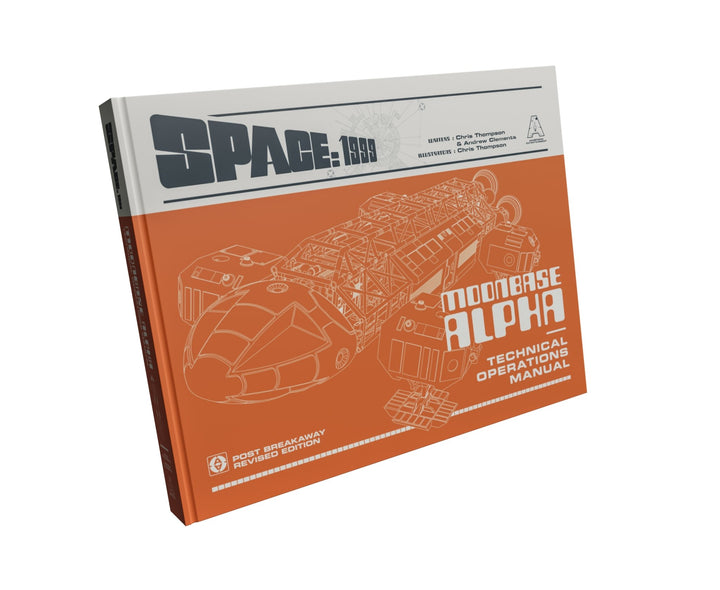
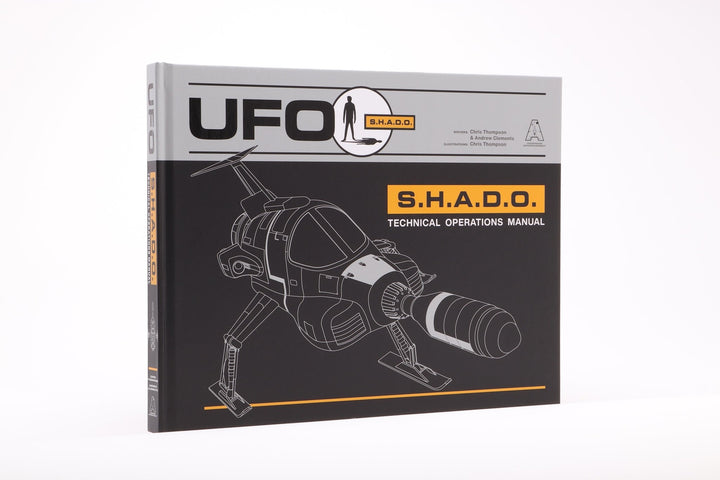
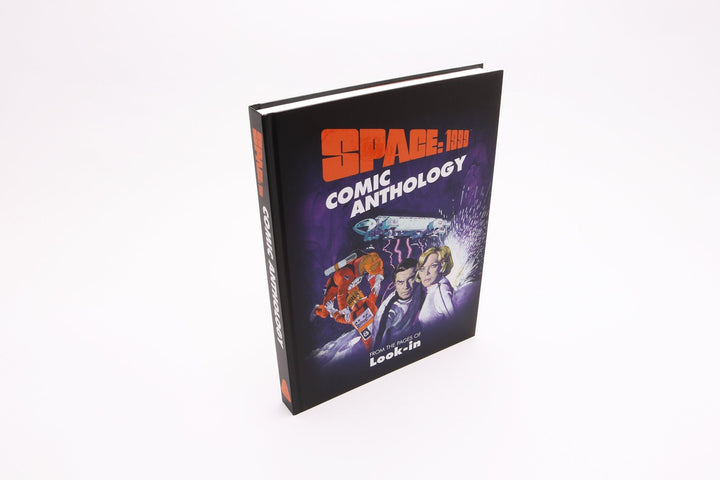
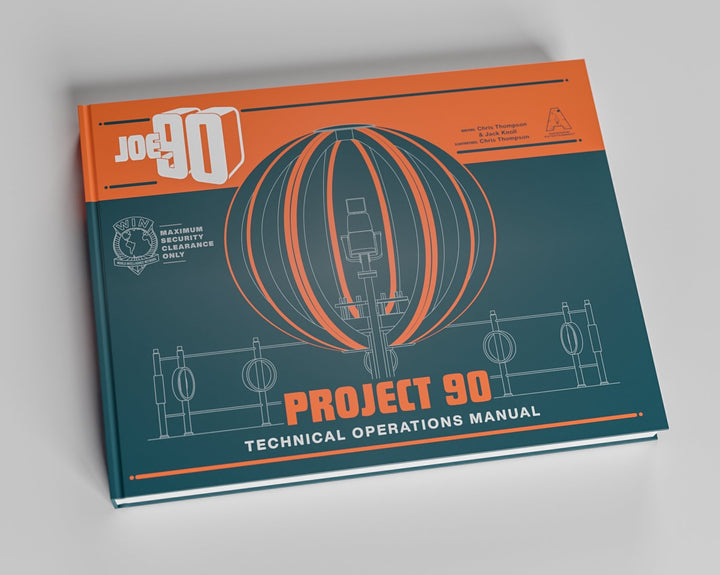
![Thunderbirds Comic Anthology Volume One [HARDCOVER] - The Gerry Anderson Store](http://gerryanderson.com/cdn/shop/files/thunderbirds-comic-anthology-volume-one-hardcover-8030771.jpg?v=1751089031&width=720)
![All Sections Alpha: The Making of Space: 1999 [HARDCOVER] - The Gerry Anderson Store](http://gerryanderson.com/cdn/shop/files/all-sections-alpha-the-making-of-space-1999-hardcover-7498116.png?v=1757766647&width=720)
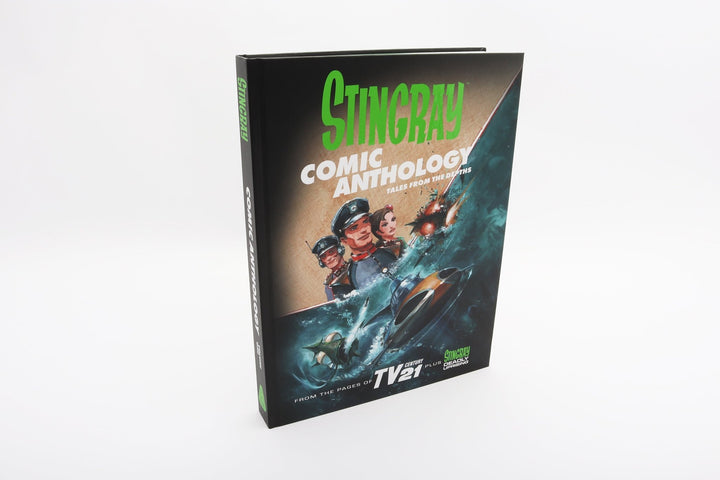
![Stingray Comic Anthology Volume Two – Battle Lines [HARDCOVER] - The Gerry Anderson Store](http://gerryanderson.com/cdn/shop/files/stingray-comic-anthology-volume-two-battle-lines-hardcover-107681.jpg?v=1738856151&width=720)
![Stingray W.A.S.P. Technical Operations Manual Standard Edition [HARDCOVER] - The Gerry Anderson Store](http://gerryanderson.com/cdn/shop/files/stingray-wasp-technical-operations-manual-standard-edition-hardcover-112278.jpg?v=1749664163&width=720)
![Stingray WASP Technical Operations Manual Special Limited Edition [HARDCOVER BOOK] - The Gerry Anderson Store](http://gerryanderson.com/cdn/shop/files/stingray-wasp-technical-operations-manual-special-limited-edition-hardcover-book-991914.jpg?v=1749657538&width=720)
![Stingray: The Titanican Stratagem – Signed Limited Edition [HARDCOVER NOVEL] - The Gerry Anderson Store](http://gerryanderson.com/cdn/shop/files/stingray-the-titanican-stratagem-signed-limited-edition-hardcover-novel-129251.jpg?v=1740558711&width=720)




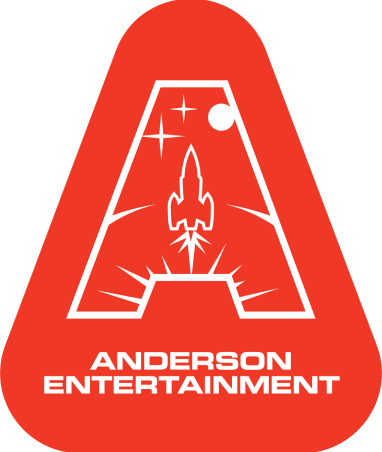



5 comments
UFO 2. Maybe it would have been a good show, maybe not. A lot of the strength of UFO arose from the interplay between the characters as well as the action portions. The Straker/Freeman relationship a prime example. If this interplay was dropped in order to increase the action, then this (to my mind) would be detrimental. As evidence of this I give you the difference between Series 1 and Series 2 of Space 1999 – series 1 was philosophical and thought-provoking; series 2 was – well, “Lost In Space” with a bigger budget!
I’m just happy to remember UFO as it was – a superb sci-fi show and (in my humble opinion) Gerry Anderson’s best offering.
I would love to see what Ron D Moore could have done with an updated Space 1999 – His work on Both BSG and on For all mankind has been great.
It is really sad to see how season after season of many TV series are produced today. UFO season 2 would have been enough for us to be happy. We know this has not happened, but why not consider the possibility that it could happen now? Why do companies like Netflix or Amazon not consider the idea of producing a new UFO 2 series for their channels?
A real pity UFO couldn’t continue and as good as Space 1999 was mostly,it wasn’t a patch on UFO.For a supposedly kids show,the human stories and tragedies were ground breaking and more suited to a more mature audience which I think has increased the longevity of it’s appeal.
UFO remains my most favourite TV series of all time and I still watch it, even though I know it line by line. It’s heartbreaking that UFO 2 didn’t get made. Space 1999 was good (well, series 1) but still not a patch on how awesome UFO was. I would have loved to have seen Straker back in UFO 2. Whoever made the call on ending UFO 2, they commited the biggest blunder of their life.